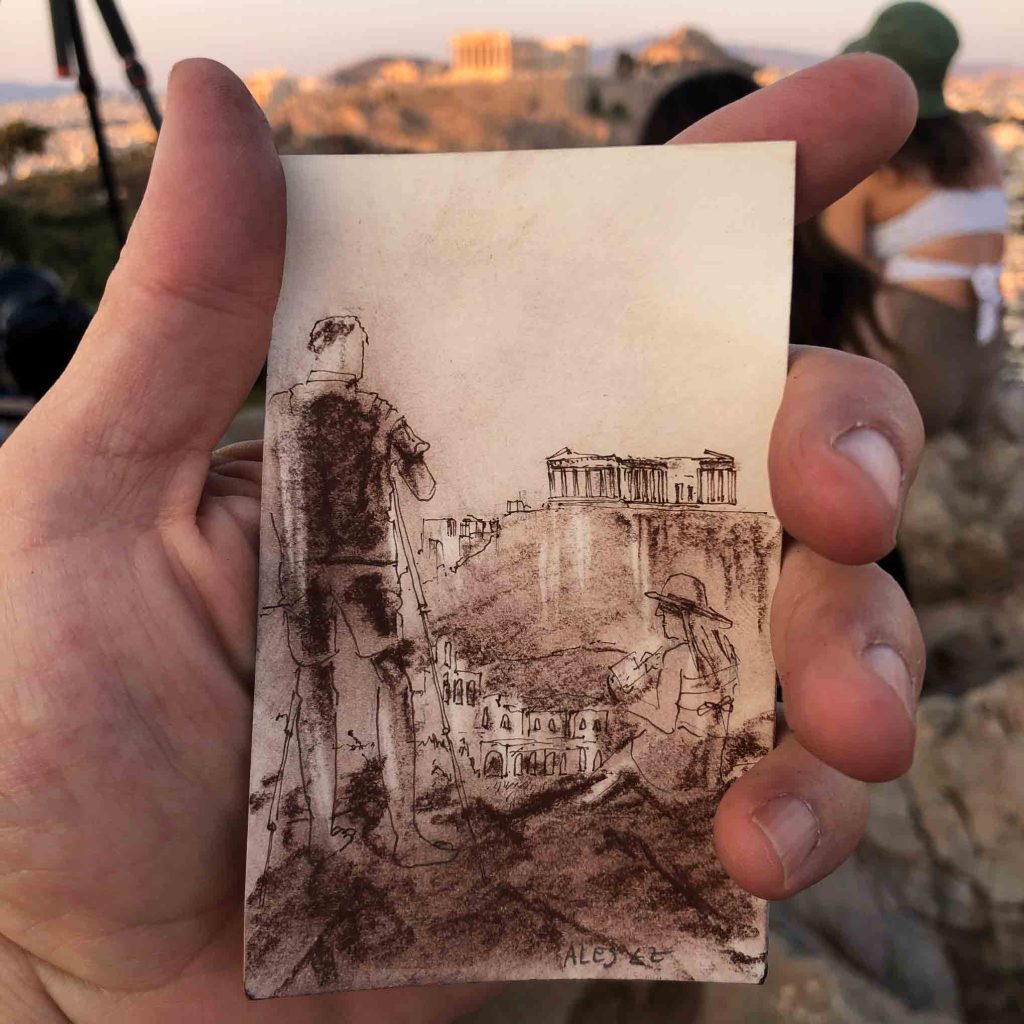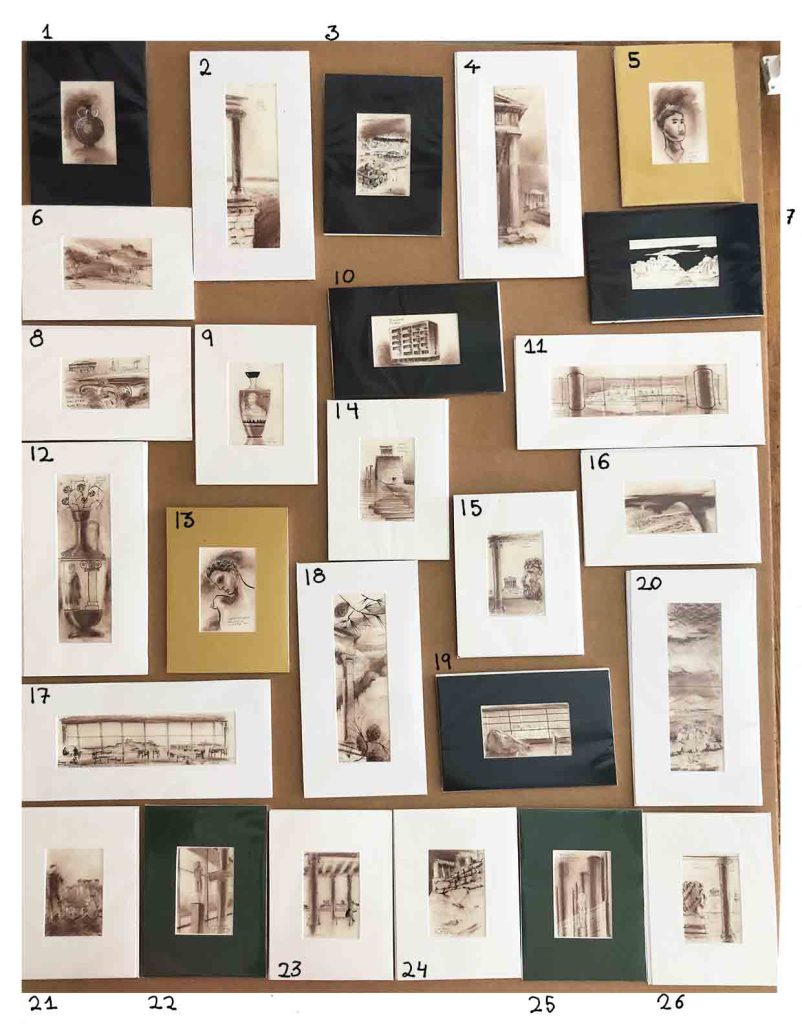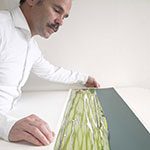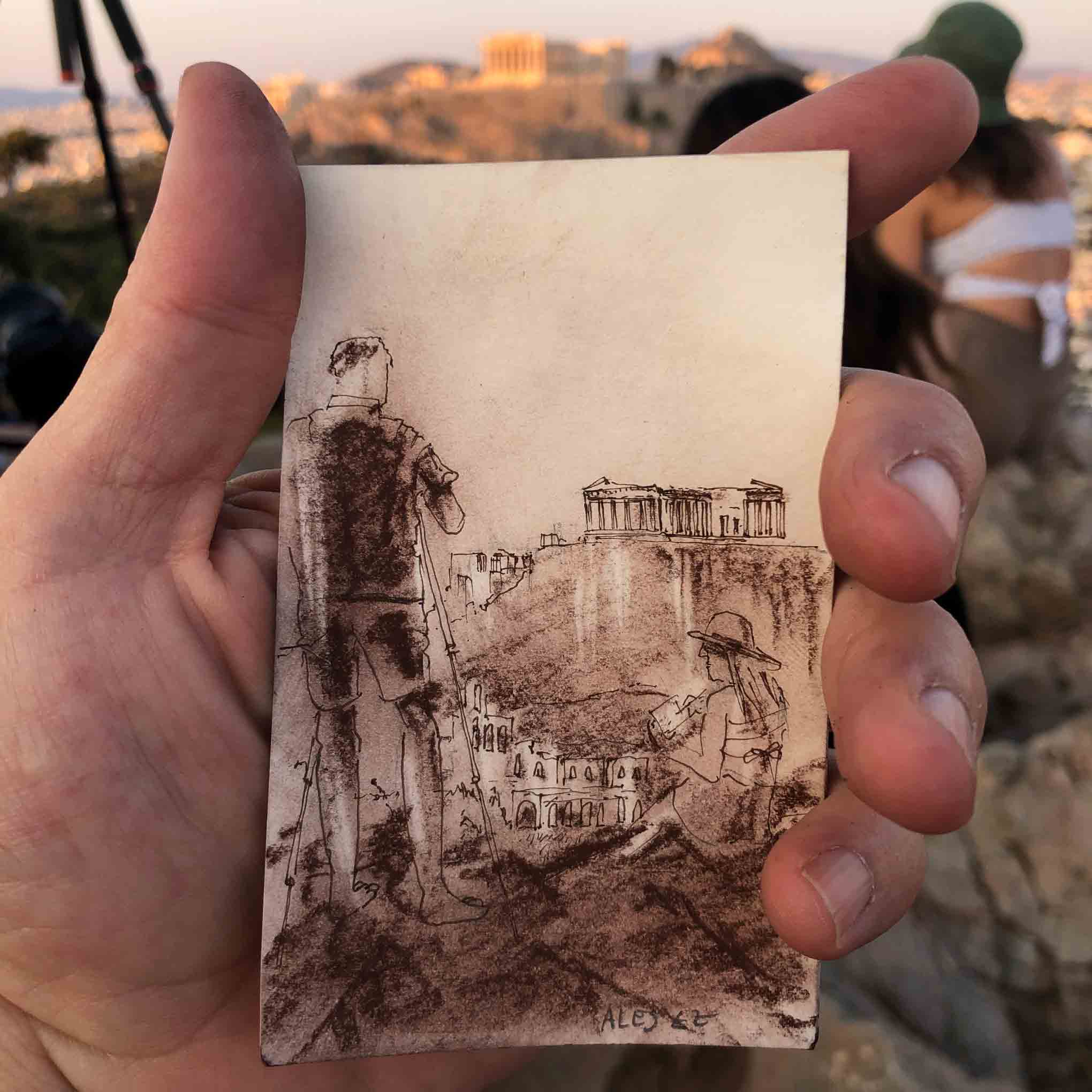
Athens – a record of classic landscapes and arts. September 2023
Earlier this year I found myself reading every book I could find on Greek culture: the Classic Myths – The Penguin Book of Classical Myths by Jennifer March – with the gods and heroes; books on pottery, on sculptures – Six Greek Sculptors by Ernest A Gardner – and even on literature and philosophy -The Greek Way by Edith Hamilton -. And before this the trigger of my interest came from reading John Keats’ poem ‘Ode to a Grecian Urn’ which gave the title to my project with Glyndebourne.
It was only natural that to complete this training I should go to Greece to see for real all I had read about. At the end of August I went to Athens for 9 days and visited every historic site, private and state-owned, large and small museum, foundation and gallery.
Every day I took my sketchbook, which is only seven by eleven centimetres of Fabriano paper that I bought five years ago in Sicily and is perfect to carry around. Starting with the Ancient Agora and the Acropolis I started depicting the landscape, the classic architecture, the interior of the museum and paintings and sculptures.
My compositions are first drawn in pencil, then I go over using ink fine pens and apply sepia pastel pencil for light, shadows and textures.
It is always a challenge to portray a large landscape or a complex composition with different subjects on such a small piece of paper but somehow the limitations are very satisfying because the formation of a piece to its highest level of line work and saturation of the use of pastel happens in a short period of time.
My love for antiquity and classic arts has been with me since I was a child. I grew up in Tarifa, a small town right at the southern point of the Iberian Peninsula.
Near the sea on the Atlantic coast we used to visit the Roman ruins of the city of Baelo Claudia though it was just a day out at the beach. With perfect white sand and beautiful dunes, pine trees all around and in the middle of the bay is this perfect roman town with amphitheatre, agora, cardus maximus y decumanus maximus, temples, shops, houses, mosaics and more. The site at the time didn’t have a fence so my parents and I just walked around. This sparked my interest and curiosity. Later on, as a teenager in Sevilla, our playground was Maria Lisa Park with the incredible Archaeological Museum with hundreds of classical art pieces and artefacts from the nearby Roman city of Italica.
I am an architect and part of the training is to learn about the presentation of buildings and landscapes, knowing the rules of perspective. Line drawing is a fundamental part of this training. Also drawing in architecture always has a purpose which is to analyse and clearly illustrate order where there is often chaos.
So in Athens I wandered around with my sketchbook and my pencils; and everywhere I went I took hundreds of photographs, often of the same subject that I found interesting in terms of subject choice, composition, format, light, narrative and relevance. and later on in situ when possible, or more comfortably sitting in a terrace of a cage or over dinner I took my sketch out and drew my recollection of places and subjects from the day.

Catalogue record of location and subjects of the drawings I created in Athens from the 29th of August to the 7th of September 2023:
Pen, ink and sepia pastel pencil drawings on Fabriano paper.
Sizes 7 x 11 cm and 7 x 22 cm.
Mounted sizes A6 14.5 x 21 cm and 14.5 x 29 cm.
1. Two handles flask decorated with concentric circles and spirals 1400 B.C. Ancient Agora Museum.
2. Acropolis, Temple of Nike,one ionic column and Piraeus, the sea and islands.- Monastiraki and the Acropolis.
3. View of the Acropolis from Filopappou Viewing Podium.
4. Doric column from the Temple of Hephaistos.
, looking towards the Parthenon.
5. Bronze bust of a Winged Nike also known as Victory. Stoa of Attalos Museum.
6. Acropolis from the Pnyx Monument with clouds.
7. After Ben Nicholson’s Paros Dark Tree1924 and Konstantinos Meleas’ Santorini 1924 and Pablo Neruda 1924 poems.
8. Temple of Hephaistos and Corinthian Capital.
9. After Young Man with Bouquet 1905, by Pablo Picasso from the Basil & Elise Goulandris Foundation on an ancient Grecian vase.
10. Bauhauss Desssau, Walter Gropius, student accommodation building.
11. Interior of the Acropolis museum from the restaurant with the Acropolis in the distance.
12. White-ground lekythos 430 B.C of figure with stylized ionic column Vase from the Archaeological Museum of Kerameikos, topped with cypress branches and casquests.
13. Bronze Bust. Athens Archaeological museum.
14. Acropolis steps and Temple of Nike.
15. Stoa of Attalos bust profile. Right side.
16. Santorini, After Konstantinos Meleas painting at Athens National Gallery.
17. Athens National Gallery, interior panoramic view from the restaurant towards the Acropolis.
18. Acropolis, Temple of Nike,one ionic column and branches of pine trees.
19. Interior of the Acropolis museum with the Parthenon horse head and the Acropolis in the distance.
20. Acropolis from the Pnyx Monument with clouds.
21. The Acropolis and Epidaurus Theatre from Philopappos Hill with fellow artist, photographer and painter.
22. Youth statue. The Kritios Boy at the Acropolis Museum. Front.
23. Stoa of Attalos with a reader, looking towards the Temple of Hephaistos.
24. Climbing the Acropolis Monument of Agrippa.
25. Youth statue. The Kritios Boy at the Acropolis Museum. Back.
26. Stoa of Attalos bust profile. Left side.

Note on drawing 7. After Ben Nicholson’s Paros Dark Tree 1924 and Konstantinos Meleas’ Santorini 1924 and Pablo Neruda 1924 poems.
A remarkable coincidence. After having completed this sketch, I decided to do some research, 1924!
At the National Gallery of Athens I was fascinated by a painting by Konstantinos Meleas of Santorini. Then at the new Basil and Elise foundation I saw a beautiful Ben Nicholson landscape of Paros with a tree. In this drawing I reference the work of both artists and also incorporate a pine tree for two reasons, mainly Pablo Neruda’s poems, how poetically he describes graphically how the elongated leaves of a pine tree combs the air; and In addition at home in Brunswick Square there are some wonderful pine trees with their beautiful geometrical pine cones. I keep going to 1924, unwontedly the three art pieces I am echoing, a drawing, a painting and a poem date to that year.


